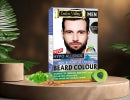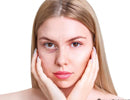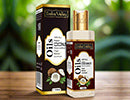The beard has always been on trend and it will stay in fashion for long; a symbol of masculinity, as much as, say, the eyebrows are a sign of feminal beauty for women. The man’s beard, therefore, exudes the inner image of his glorious self like no other. With age, however, little streaks of grey start appearing. And each have their own ways of dealing with it. Some embrace it by flaunting a salt and pepper look, while some prefer to color it up. Which is where an ammonia free beard color becomes a viable option—especially if you just want to color it up for a fancy change, despite your greys. As, what can be better for doing that than using an ammonia-free, or a damage free beard color? You surely won’t regret it later!
Read on to learn how you can color your beard with organically natural beard colors in the best ways possible.
Don’t Make These 6 Mistakes While Coloring Your Beard:
If you got disappointed with the results of dyeing your beard with natural colors, then try these tips:
1. Are You Washing the Dye Before it Sets In?
Most beards develop in thickness and coarseness from ages 18-30. As the process of aging happens, facial hair becomes coarse. Due to this, the absorption of the hair color takes a longer time. To set the dye properly, it needs to sit for at least seven minutes. So, next time you apply your damage free beard color, make sure to not wash it out straight away. Let it sit for at least seven minutes or more. Ideally let it stay for at least 30 minutes.
2. Are You Selecting the Right Color For Your Beard?
In general, men dye their beards black to cover the greys, which doesn't look good. In general, match the beard color with that of your hair. But, choosing a lighter shade for your beard is recommended as going darker to match your hair color is easy but going lighter is difficult to achieve. As a rule of thumb, choose the beard color that matches the medium shade in your natural hair.
3. Do You Know the Importance of Choosing an Organic Beard Color?
Chemical beard colors contain ammonia and lead, which are very harmful. Ammonia can damage your beard hair badly, causing your beard to dry out and become weak. Lead is also not safe for the skin and may cause many diseases, including cancer. Choose an ammonia free beard color or a lead free beard color that is safe for your health. Choose an organic beard color enriched with natural herbs, which is mild, efficient and safe for coloring your beard.
4. Are You Ignoring Your Eyebrows?
If you notice grey hair appearing on your eyebrows, then don't tweeze them out. Just start using beard color on your eyebrows too so that it matches with your beard. This grooming hack will make the whole thing look more natural. Dip a Q-Tip into your beard color and slowly touch from the shaft to the end of your eyebrows.
5. Are You Coloring the Unwanted Areas Too?
Apply some petroleum jelly or mineral oil on the edges of your beard to prevent the dye from staining your skin, the areas you don’t want to be coloured. Jelly not only provides a protective barrier for leakage, but it also helps in easy cleanup if coloring seeps into those unwanted places.
6. Is it Essential to Clean the Excess Coloring?
Not rinsing out the excess color after it dries is another mistake that you must avoid while coloring your beard. While taking a shower, apply a little shampoo to your beard and massage it with your fingers to remove the excess color. It will help you to get a fresh and realistic look.
Why Should We Not Apply Hair Color on the Beard?
- Different Hair Textures: Beard hair can be much coarser and wirier compared to the hair on your head, meaning the very same hair colorant may not work well at all—putting your color and shades to risk.
- Skin Sensitivity: The skin around the beard area is more sensitive in comparison to scalp skin. Some hair dyes may contain harsh chemicals that disturb the skin or bring out allergies. Any application of any hair dye to the beard should begin with a patch test to allow for adverse reactions.
- Ingrown Hairs: Yes, dyeing your beard will increase the chances of ingrown hairs, especially if you have curly or wiry beard hair. Ingrown hairs occur when the hair curls back into the skin instead of out, causing irritation, redness, and sometimes infection.
- Maintenance: The dyed beard needs consistent maintenance to keep it neat and the same color. With time the beard grows; the natural hair color will start showing at the roots, meaning you will have to touch up often.
What is a Damage Free Beard Color?
Indus valley damage free beard color is an organic beard color that comes packed with the goodness of organic herbs. The herbs will leave your beard healthy, shiny and soft, naturally, without causing any irreparable damages like making your beard hair rough and brittle.
What Kind of Herbs Should You Look Out For in a Damage Free Beard Color?
A few herbs that you should look out for in your ammonia free beard color are:
- Aloe Vera: Moisturises and adds shine
- Jojoba: Combats dryness and softens beard hair
- Coffee Bean: Helps improve beard texture, darkens the color
- Sunflower: Rich in omega-9 fatty acid, protects against harmful UV rays and conditions beard hair
- Wheat Germ: Vitamin-rich, repairs dry and damaged beard hair follicles
- Henna: A natural coloring herb that also adds shine to the beard
- Amla: Vitamin C stimulates an increase in collagen and melanin production, while strengthening beard hair
- Basil: Anti-inflammatory properties cleanse the beard and prevent breakage
How to Choose a Beard Color According to Your Skin Type?
| Types of Skin | Best Beard Color |
|---|---|
|
Fair |
Blonde For a Subtle Contrast Fair |
|
Medium |
Match the beard color with the medium shade of your natural hair |
|
Dark |
Dark brown or black for a perfect blend |
|
Sensitive |
Choose an hypoallergenic beard colour, allergy-free and safe to use |
|
Normal and combination |
Damage-free beard colour, no ammonia, ppd or hydrogen peroxide |
FAQs
1. Which One Should I Choose, Organic Beard Color or the Chemical One?
Most commercial beard colors contain pretty dangerous things such as ammonia and lead, which can really do damage to your hair and even make your skin irritated. Going for an organic beard color enriched with natural herbs guarantees a gentle and safe coloring experience with no probability of experiencing long-term damage.
2. How Can I Dye My Beard to Give it a Natural Look?
To have a natural color for the beard, one should opt for the medium-tone for the natural hair. Apply petroleum jelly or mineral oil around the edges of the beard so that it will not be stained in unwanted places. Rinse excess color after it dries to sustain an apturous and natural look.
3. Why Use a Safe Beard Color?
A no-damage beard color, powered with the power of organic herbs like aloe vera, jojoba, and henna, not only colors your beard but also moisturizes, softens, and strengthens your hair. Such natural ingredients also add overall health to your beard, making it shiny, soft, and vibrant, yet not at all hurting it in the long run.
Do you have any queries that you would like to ask from our grooming and health experts? Just leave your comments below and we will get in touch with you. Till then—stay natural, stay handsome!








































































